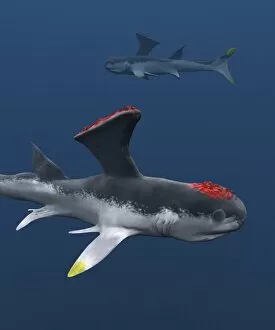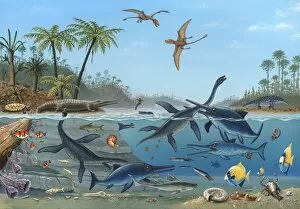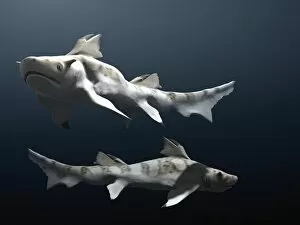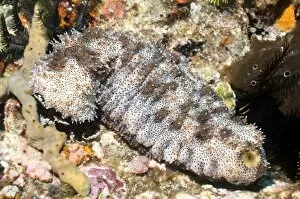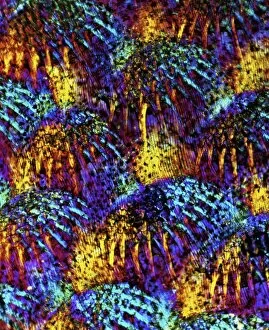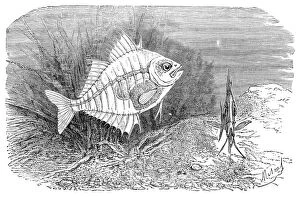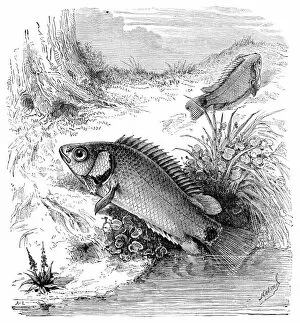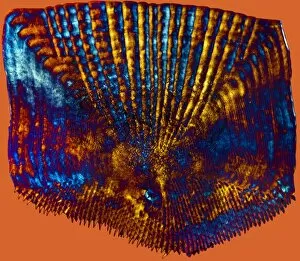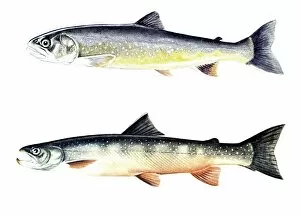Ichthyology Collection (page 41)
Ichthyology, the study of fish, takes us on a captivating journey through the depths of our oceans
For sale as Licensed Images
Choose your image, Select your licence and Download the media
Ichthyology, the study of fish, takes us on a captivating journey through the depths of our oceans. From the venomous Greater weever, Trachinus draco, to the majestic sperm whale family gracefully swimming together, these creatures never cease to amaze. The powerful TUNA, particularly the female bluefin tuna (Thunnus thynnus), showcases its strength and beauty in every movement. But let's not forget about their ancient relatives like Megalodon, a prehistoric shark that ruled the seas with its sheer size and power. On a more serene note, Koi carp grace our ponds with their vibrant colors and graceful presence. Delving into anatomy, we explore the intricacies of common carp anatomy - an essential aspect for understanding these fascinating creatures. Meanwhile, Striped Burrfish find solace on Caribbean reefs as they navigate their surroundings with precision. The Wels catfish and Blochs catfish remind us of diversity within this field; each species possesses unique characteristics that contribute to our knowledge base. And who can ignore the intriguing Sea lamprey? Its peculiar appearance raises questions about evolution and adaptation. Moving towards European waters brings us face-to-face with pilchards - Sardina pilchardus - showcasing their abundance in these regions. In contrast to this tranquility lies Byron Bay in Australia where Wobbegong sharks coexist harmoniously with cardinalfish amidst stunning coral reefs. Lastly but certainly not least are killer whales hunting together in clear oceanic waters – a breathtaking sight that exemplifies both teamwork and nature's raw beauty. Ichthyology allows us to immerse ourselves in an underwater world filled with wonderment and discovery. These glimpses into various aquatic ecosystems remind us of how precious our oceans truly are – teeming with life waiting to be explored by curious minds seeking answers beneath the waves.

